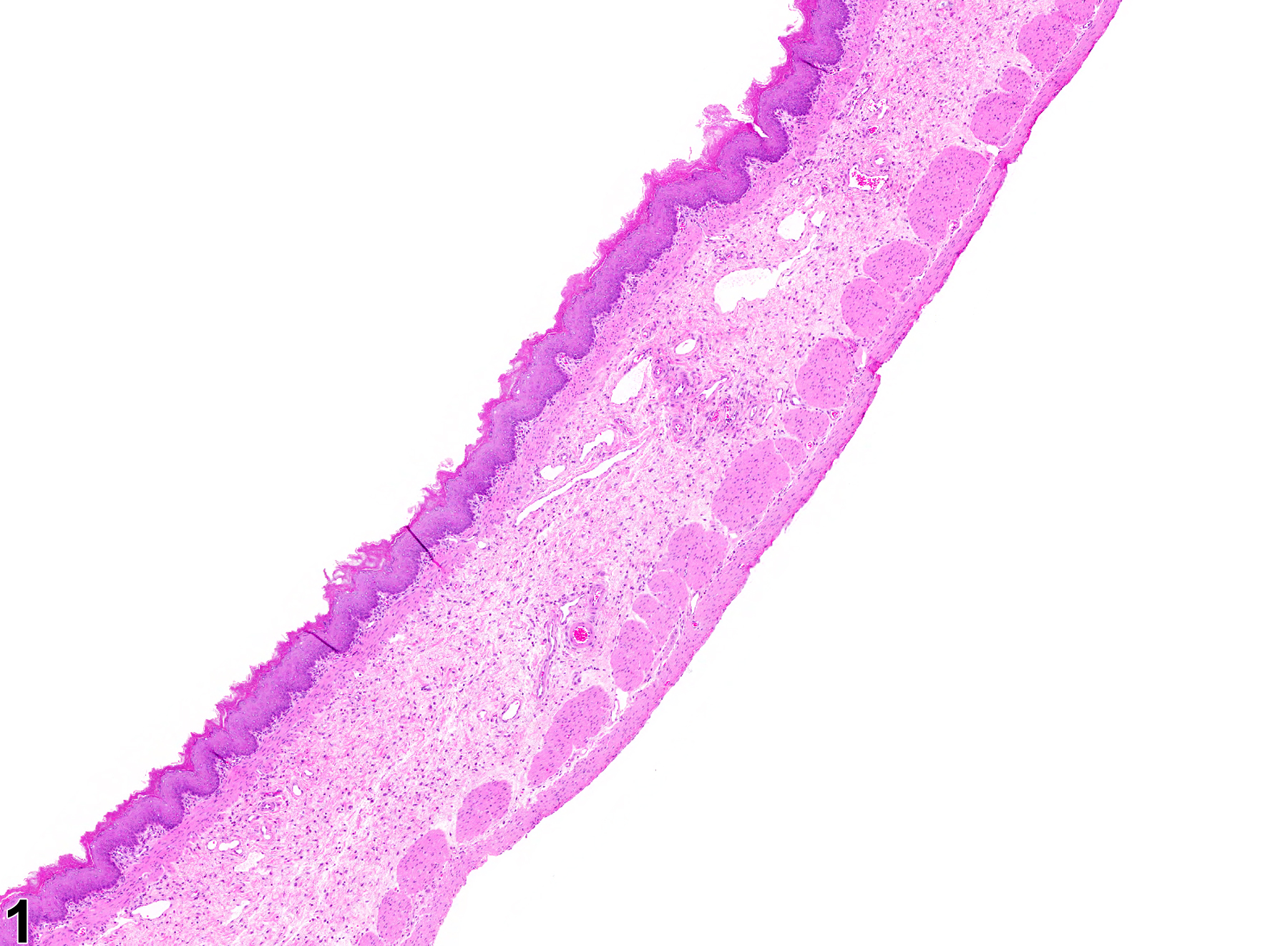Alimentary System
Stomach, Forestomach - Fibrosis
Narrative
Kumar V, Abbas AK, Fausto N. 2005. Tissue renewal and repair: Regeneration, healing, and fibrosis. In: Robbins and Cotran Pathologic Basis of Disease, 7th ed. Elsevier Saunders. Philadelphia, PA, 87-118.

Stomach, Forestomach - Fibrosis in female F344/N rat from a chronic study. The submucosa is expanded by fibrotic tissue.



